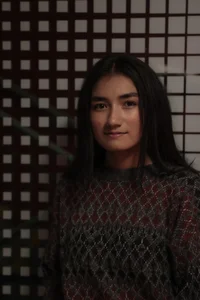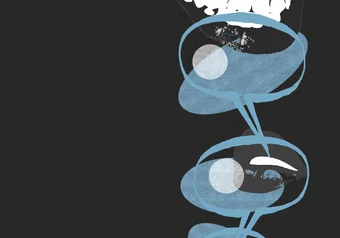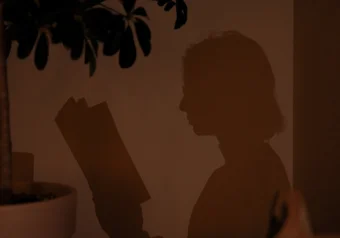I wasn’t raised in the Philippines, so all of my knowledge of the country comes from my family and what they chose to expose me to.
At any given time, The Filipino Channel (TFC) would be playing on the small television screen in my lola’s bedroom. She sat on the edge of her bed, peeling vegetables and tossing the skins into a recycled takeout bowl on a small folding table, probably lost in Coco Martin’s eyes.
No one ever taught me Tagalog — one of the official languages of the Philippines — which was interwoven with English in all of the shows on TFC.
In my household, we used the regional language of Pangasinan. I understand it perfectly and could speak it when I was younger, but I rarely find opportunities to use it now.
Luckily, I love learning languages and have always picked them up with ease. Using context clues and a careful ear when around my cousins who spoke Tagalog, I managed to piece together more and more elements of the language and found myself with a pretty decent understanding of it.
But I never know for sure if I’m correct in my translations. I misinterpret meanings, and neglect nuances that can only be learned through proper teaching. My vocabulary is limited to things that my family would say around the house — the words used in their tsismis (gossip) or in the kitchen while cooking for parties.
In short bursts between episodes of soap operas, game shows and ads for remittance services, my lola’s TV aired updates from ABS-CBN, one of the main news outlets of the Philippines.
I wanted so badly to understand the news. Soap opera plots were easy enough to decipher, even with my limited knowledge of Tagalog (the characters had such overexaggerated reactions that you could probably figure out what they were feeling without knowing the language at all).
But I wanted to know what was happening in the Philippines from a source that was in the middle of everything. I wanted to learn about current events without having to wait for something deemed “significant” enough to be featured in English media. I wanted to understand what was happening in the country I held dear to me, but didn’t have the right words for it — when in those kitchen conversations would I have heard the vocabulary I needed to learn about war? About politics? How could I better understand my identity as a Filipinx person when my understanding of the Philippines was limited to recipes and celebrity drama?
“A lot of public discourse, including the internet [and] film, are in languages other than English, including in Tagalog. So if we're going to understand public discourse, ability in that language is important, necessary even.”
Coming to UBC, I was determined to learn how to actually speak Tagalog — to me, that meant being able to use it in an academic setting. I would finally be able to watch the news, or pore through historical documents or hold a conversation that went further than surface level formalities.
I expected that, given the rather large population of Filipinx people in Vancouver, there would be a course complete with structured lessons and the opportunity to practice speaking with someone who wasn’t my mother.
It was shocking to learn that there wasn’t a course like this at all — in fact, there turned out to be practically no courses outside of the Social Justice Institute that covered Filipinx communities and issues, and definitely not any centred around language. Sir Charles Tupper Secondary is the only school in BC that offers a Filipino language course, which is running for the first time this academic year.
Dr. John Paul Catungal, a professor in Critical Racial and Ethnic Studies with UBC’s Social Justice Institute, spoke to me about the role that language plays in understanding Filipinx stories. Instating a language course can be beneficial, but is more complicated than it may seem.
“Language is a skill set. Language is also a way of knowing the world. Language is a tool for relationship building,” said Catungal. “There's also the practical thing of language being a way to understand history.”
From his perspective, demographics don't determine language course offerings — instead, the value that the institution places on languages does.
Almost nobody actually speaks Latin for instance, but universities run Latin programs because academics need it to study classical history.
“Latin holds a place in the Western imagination as a language and a history that is important enough for it to be integrated into the curriculum,” said Catungal. “There's also considerations around the politics of knowledge — what is to be a priority and what isn't.”
But what does that say about whose history we are choosing to focus on?
Catungal pointed out that in addition to archival materials, knowing Tagalog is also important for understanding current media.
“A lot of public discourse, including the internet [and] film, are in languages other than English, including in Tagalog. So if we're going to understand public discourse, ability in that language is important, necessary even.”
Though a full-fledged course is not currently in the works, there is an option for individuals who are already fluent in Tagalog to have their abilities evaluated in order to fulfill the arts language requirement — however, even then the language is not prioritized. Catungal, other faculty members and some graduate students have been asked to conduct these assessments without any form of financial compensation, despite it being outside of their job description.
Catungal expressed that though he would like to support fellow Tagalog speakers in getting their language proficiency recognized for credit, it’s unfair that he has to do it for free.
“[The university] can't even pay someone to evaluate someone's language skill. That, to me, is an example of the university not recognizing that this is a skill in a material way.”
But if there were to be a Filipino language course, would it focus on Tagalog? It’s the most prominently used language in the capital city, Manila — a hub of cultural and political landmarks long influenced by Spanish rule.
Tagalog is the default option, but would potentially reinforce a colonial characterization of the Philippines and neglect the cultural diversity of the country.
“How do we not reproduce, in our call to institutions like UBC, the inequalities that already exist around that category ‘Philippines’? How do we ensure that we are not reproducing a Tagalog-centric, nationalist framework?” said Catungal.
“We're not just all of a sudden abandoning that in favour of ‘Filipinoness’ as a singular identity, as if that's the only one that is possible for us.”
Like my own, Catungal’s family is from Pangasinan — he understands firsthand what it’s like to be lumped into a category that does not define you, and to feel obligated to represent something you don’t fully identify with or understand.
Throughout my life, I was expected to be a spokesperson for Filipinx people — whoever that might include — in rooms where I was the only source of this information. The issue was that I couldn’t accurately speak for everyone’s experiences, but still wanted to make sure that Filipinx voices were being heard. How could I promote art and music from the Philippines if I couldn’t understand it? What did I know of Kapampangan or Tagalog or Ilocano or all the other languages that I couldn’t speak but also wanted to educate people on? How could I decide between responding to questions about the Philippines at the risk of misrepresenting cultures I wasn’t a part of, or leaving them completely unanswered?
I have always prioritized Tagalog over my family’s mother tongue, because it’s what people associate with the Philippines. But why should I even have to do that?
“The Philippines is actually really diverse, culturally and linguistically, and to subsume people from Pangasinan with people from other parts of the Philippines is to potentially try and flatten those differences,” said Catungal.
“We're not just all of a sudden abandoning that in favour of ‘Filipinoness’ as a singular identity, as if that's the only one that is possible for us.”
This article is a part of The Ubyssey's 2023 language supplement, In Other Words.
Share this article
First online






